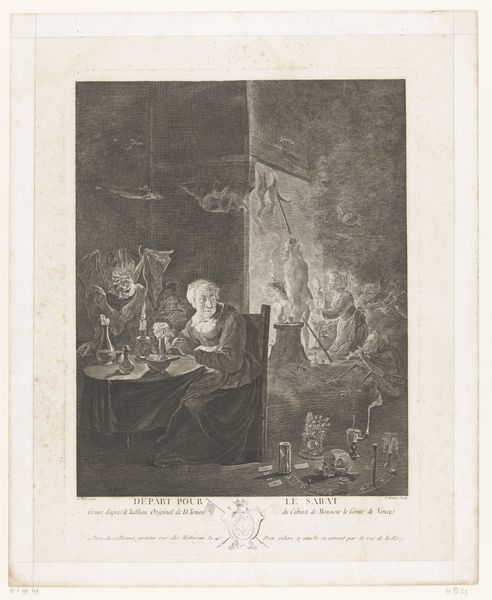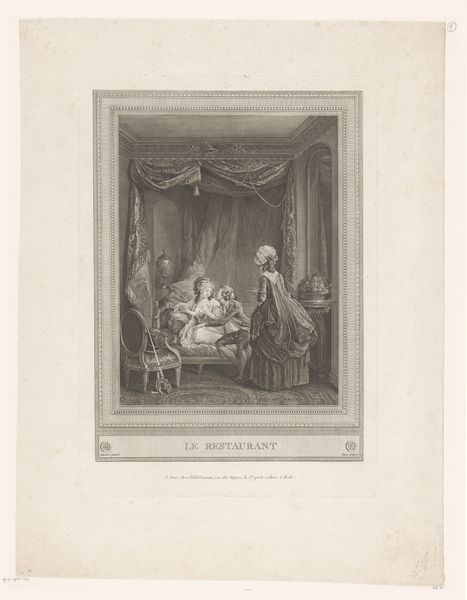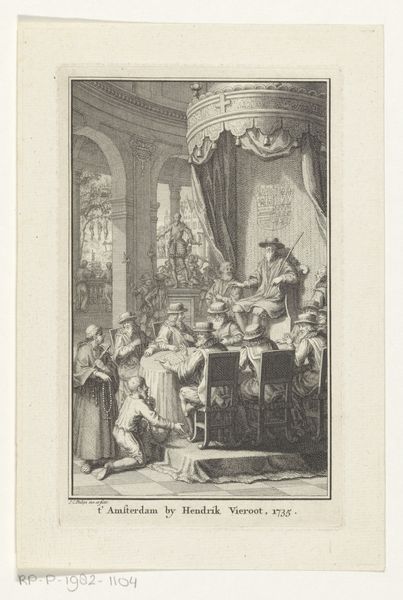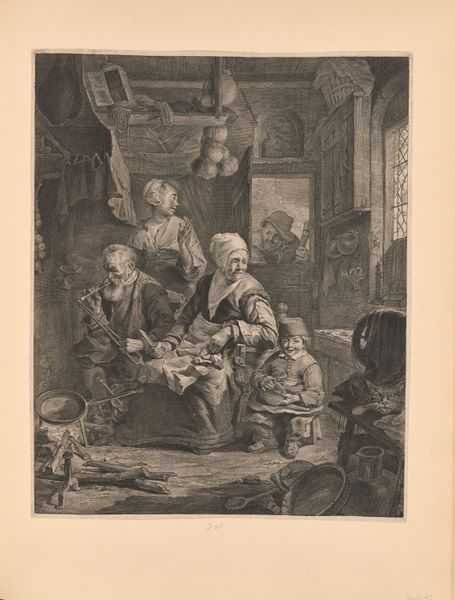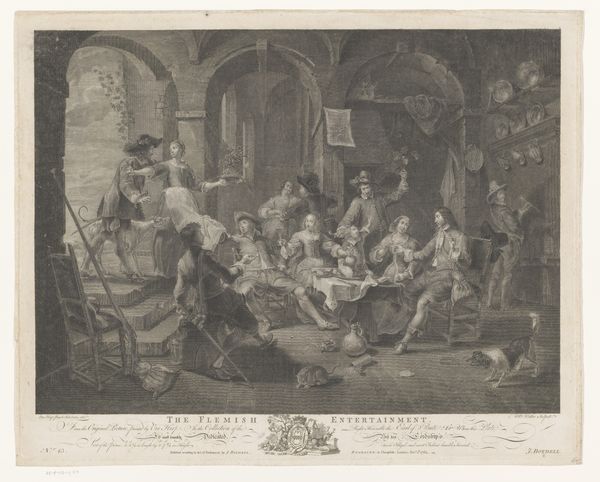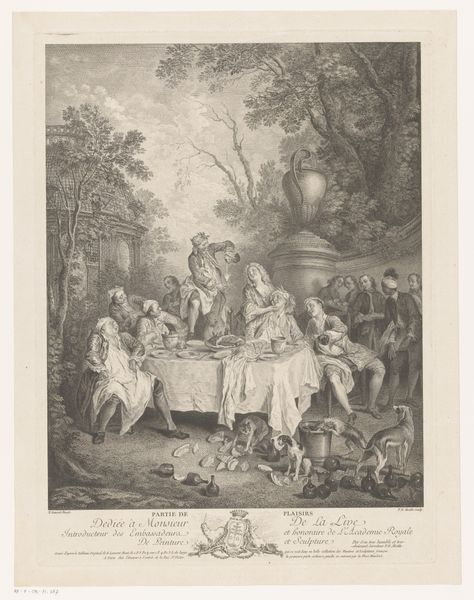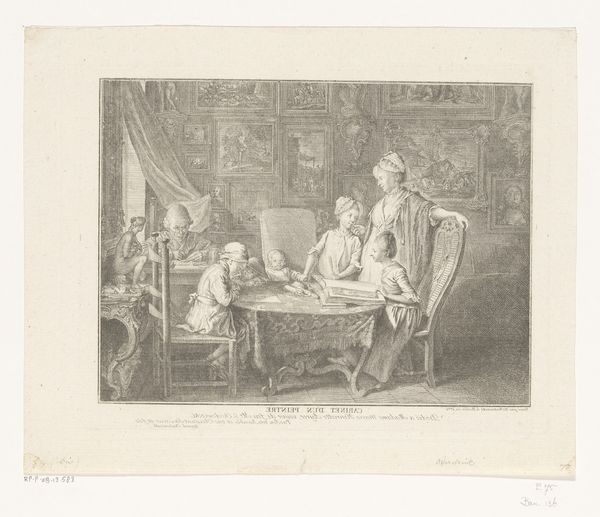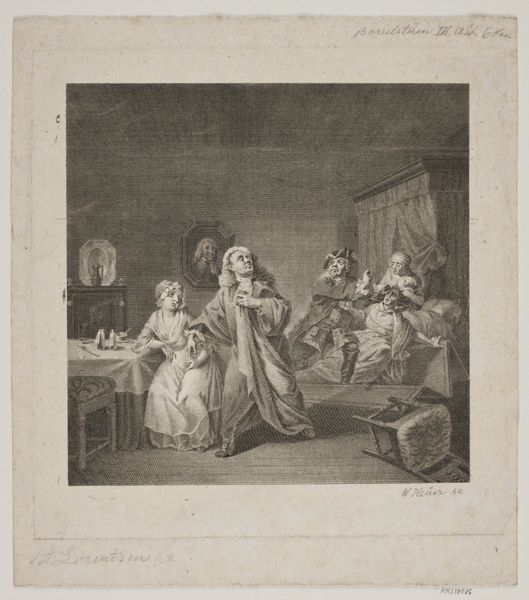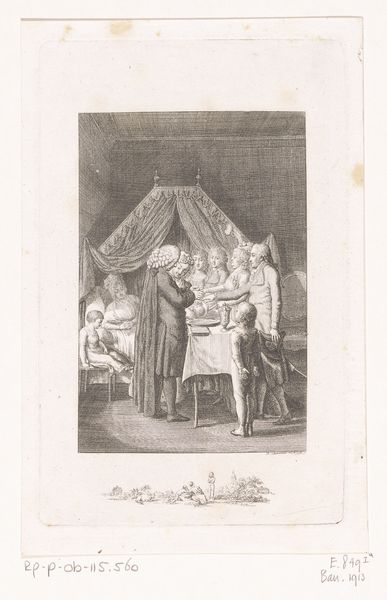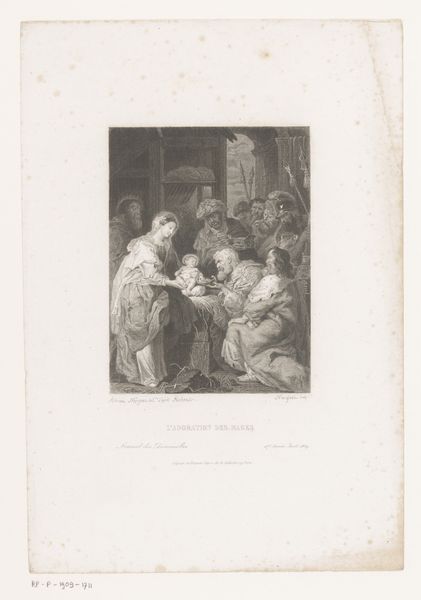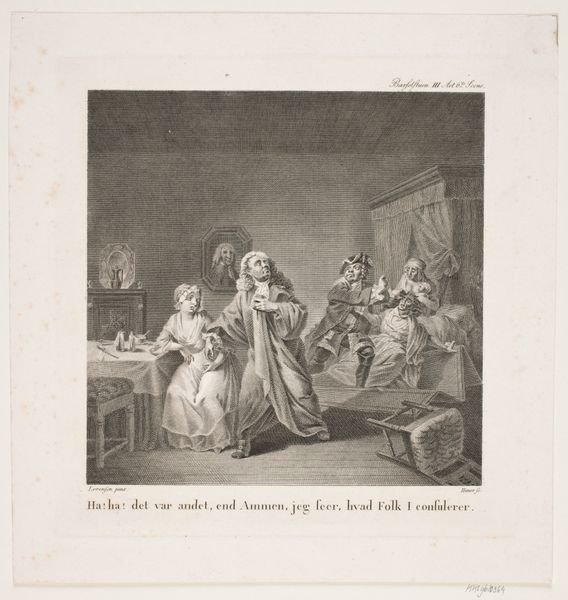
engraving
#
baroque
#
figuration
#
history-painting
#
engraving
Dimensions: height 383 mm, width 280 mm
Copyright: Rijks Museum: Open Domain
Curator: Here we have Jacques Aliamet’s “Heksensabbat,” an engraving from 1755, now held here at the Rijksmuseum. Quite the subject, wouldn’t you agree? Editor: Immediately, I'm struck by the grotesque and the mundane coexisting so casually. A crone meticulously pouring over what seems to be alchemical ingredients while surrounded by demonic figures, hourglasses, and skulls…It speaks of hidden knowledge, of a world teeming just beneath the surface. Curator: It is a window into the socio-political anxieties surrounding witchcraft at the time. Engravings like these served a public function. They were not just artistic expressions but disseminations of ideology, visualizations of dangerous ‘others.’ The visual readily transformed social fear into material object. Editor: Absolutely, fear is potent. See how the artist renders the witch figure with exaggerated features, a kind of hideous caricature…Yet, that skull on the table is universal—a memento mori accessible and unnerving to any viewer regardless of their views on witchcraft. Even bats echo across cultures as omens and heralds of transition. It’s a powerful brew of symbols designed to provoke dread. Curator: Consider the intended audience too. Engravings were relatively accessible, which meant these ideas about witches circulated widely through society. Also the depiction is from an existing painting; we can imagine that art patrons and those who would otherwise never confront an idea such as "witchcraft" may now have an immediate conception. Editor: That explains the relatively polished, baroque style despite the somewhat outlandish content. Still, the stark black and white of the engraving gives it a sense of immediacy, a rawness, heightening the terror… almost like a medieval woodcut but with the visual refinements available during the Enlightenment! Curator: I agree; the choice of engraving amplified its influence. It brought a fringe belief into the realm of everyday discourse, helping shape public perceptions that endure even today. The very accessibility afforded it a political life. Editor: And in that respect, perhaps, we find that some symbols transcend historical narratives. Even now this image sparks both intellectual curiosity and lingering discomfort—a testament to its power! Curator: Precisely! Art as a mirror and maker of its society. Thanks to your insights, I will look at the visual symbol from this day forward more cautiously.
Comments
No comments
Be the first to comment and join the conversation on the ultimate creative platform.
